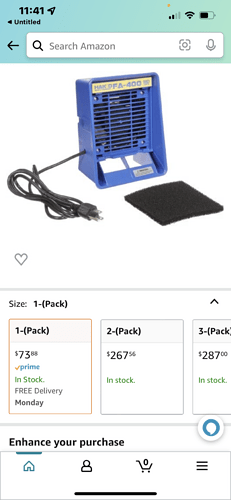![]() Thread needs a better title.
Thread needs a better title.
I urge anyone to suggest one!
The important Disclaimer part:
-
 Electronic devices, even when unplugged or battery powered can deliver fatal shocks when mishandled or opened!
Electronic devices, even when unplugged or battery powered can deliver fatal shocks when mishandled or opened! 
-
Opening devices will void the warranty. When you do it, it is your fault!
-
You break it, your fault!
-
This is the internet, it does not have a brain. Use your own!
Have an imaginary Q&A:
Q: What is this?
A: A general purpose place to discuss electronics at a component level, soldering techniques, tech help in the sense of “I want to Cap-Mod my amplifier, help!”, etc.
Q: Why?
A: Because 7 of you crazy people liked @Souldriver 's encouragement:
I will contain my (mildly) audio related tinkerings to this thread in order to keep noise down and signal high in other threads.
Q: What qualifies you?
A: Nothing, just doing this as a hobby
Q: Are you serious?
A: Always! Only serious here! No Funny!
How to get started (with any Topic):
- Get a book
- Watch videos on the subject you are interested in
- Ask a friend
- Ask strangers on the internet (preferably the helpful ones)
- Learning by doing
Tools to get started:
-
Soldering iron - preferably a regulated one, does not have to be expensive, cartridge-heater types are preferable
-
tweezers - fine tipped, non-magnetic comes in handy
-
pliers - any size, for the bigger parts or gently applied extreme violence
-
Helping/third Hands - Because humans are somewhat limited in the grab&hold department
-
Good lighting - diffused light is nice, a head-lamp or phone display work too (speaking from experience)
-
Multimeter - Can be the hardwarestore-check-out-special, just don’t bring the probes near high voltages. Minimum viable Functions: AC and DC Volts and Amps, Resistance
-
Ruler/Caliper/tape measure - “Does this actually fit in here?”
-
screwdriver kit/bit set - To get in there in the first place
Tools that make things easier:
You don’t need any of these.
-
Calculator - yes, one with buttons that is always within reach!
-
Clamp meter/current clamp - Tick, Tick, is this thing on?
-
Better Multimeter - There is too cheap, and there is adequate, choose wisely!
-
Bench/Lab Powersupply - arbitrary voltage and current sources make life easier
-
Oscilloscope - like a volt-meter, but very fast. Can also draw pictures
-
Function Generator - because seeing what happens when is useful
-
thermal camera - “Where is it getting hot now?”
-
Electronic Load - “Is this PSU still okay?”
That bit about ESD
ESD, as in electrostatic discharge, is the big fun killer. Can totaly turn your “this works”-protoboard setup into a frustrating Saturday night, or cost your company billions.
When two objects move next to each other, the friction makes electrons move. Them not flowing freely builds up charge and ![]() goes the circuit.
goes the circuit.
Most devices when closed and handled properly are pretty safe from ESD, when you take the cover off, one little discharge may seriously hurt your wallet.
The proper way is to get a wrist strap (with a cable! These do NOT work wirelessly!), an ESD-mat and a common ground point (usually sockets into an electric outlet). All three connected together ensure everything and you are at the same voltage level at all times preventing static buildups and therefore discharges. Use only ESD-safe packaging (marked D, C or S) and ESD-safe tools. Test all protection devices and materials regularly, and so on.
At home: A ground-strap with a crocodile clip to connect yourself to the case of the device you are working on is likely sufficient. Since a full setup is less than 100$/€, consider getting one for the peace of mind.



